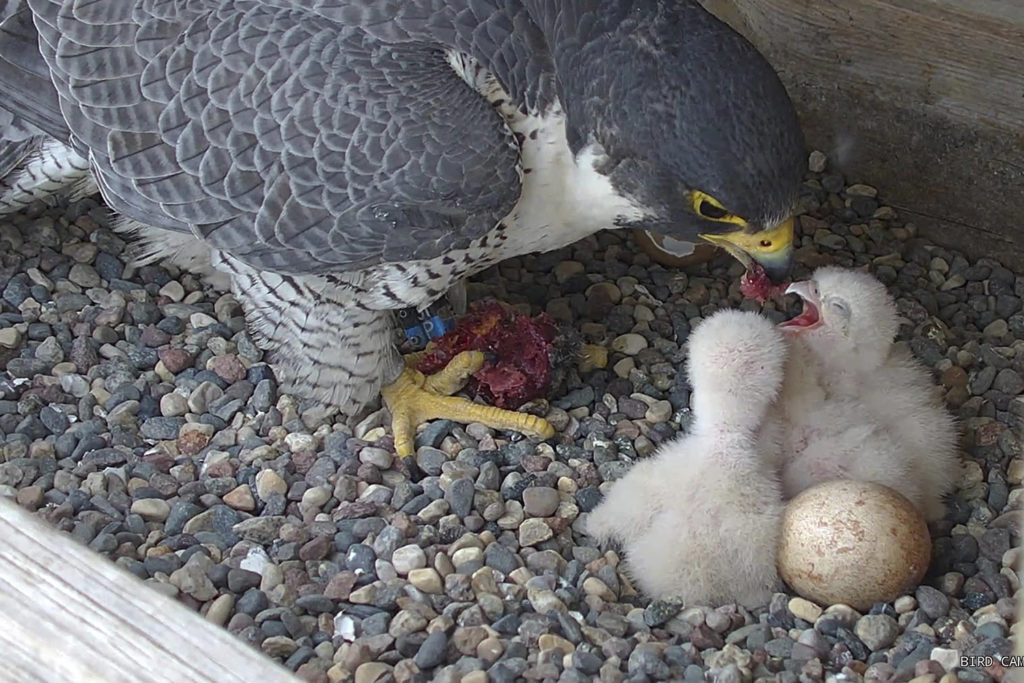
The mascots of Great River Energy are back.
In a significant milestone for raptor conservation and electric cooperative concern for community, Breezy and Brooklyn, a familiar pair of migratory peregrines, have accepted a revamped nesting box atop a power pole and started a family this year.
“Great River Energy’s project was the first pole-mounted nest box relocation we are aware of, and we were very excited when Breezy and Brooklyn adopted it—and even more excited when they raised four healthy young this spring,” said Amy Ries, who manages the peregrine falcon monitoring program for the Raptor Resource Project in Decorah, Iowa.
And that’s good news around the world.
Peregrines, a once-endangered species now making a comeback, have mated and laid eggs in a nesting box nestled on the roof of the 30-megawatt waste-to-energy Elk River Energy Recovery Station since 2006. A webcam allowed viewers to keep track of the falcon family.
“The falcons were a source of pride at the plant and for Great River Energy,” said Tim Steinbeck, resource recovery director at the Maple Grove, Minnesota-based G&T. “They were our mascots, of sorts. When we began streaming live video of the nest, we had no idea it would become a sensation. We had loyal viewers all over the world.”
So, when the facility was marked for demolition in 2019, falcon fanciers at the co-op flew into action to find a relocation solution in time for the birds’ early 2020 return migration.
A new nesting box atop a 90-foot power pole emerged as the best option. The pole is newly set on a slope only yards away from the plant and above the Elk River campus pollinator garden along the Mississippi River.
Brenda Geisler, a near 20-year veteran of Great River Energy who has led the peregrine project, said she worried whether the digs would be good enough. “I felt a lot of relief when I saw them lay their first eggs,” she said.
With the peregrines’ return, Geisler looks forward to one day resuming conservation activities with area schoolchildren. That includes giving them a close look at the fuzzy white fledglings when they are brought down from the nest to be fitted with leg bands to identify them for the U.S. Fish and Wildlife Service and the Midwest Peregrine Society database.
“It’s very, very exhilarating to see the students get involved,” said Geisler, who also visits schools to share the story of the black-capped, blue-gray coated peregrines, which can fly up to 200 miles an hour.
In the meantime, other co-ops and electric utilities might learn from Great River Energy’s successful relocation of a peregrine nest box from a power plant roof to a pole, she said. “A lot of facilities are closing, and many have peregrine nests,” Geisler said. “I’m hopeful moving this nest is a way to keep this a legacy for this plant and others.”
Cathy Cash is a staff writer at NRECA.